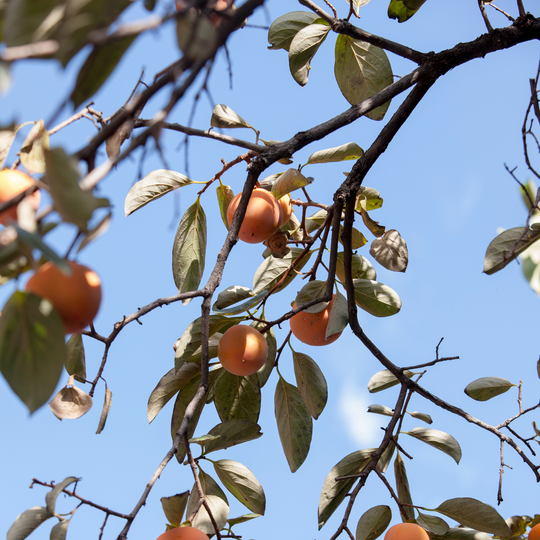Persimmon, American
- In stock, ready to ship
- Backordered, shipping soon
Tree Care:
Planting: Choose a sunny location with well-draining soil.
Watering: Keep young trees consistently moist, reduce frequency as they mature.
Mulching: Apply mulch for moisture retention and weed suppression, leaving space around the trunk.
Pruning: Shape the tree and remove dead branches during the dormant season.
Fertilizing: Use a balanced, slow-release fertilizer sparingly in early spring.
Pest and Disease Control: Monitor for pests and diseases, take appropriate action.
Harvesting: Pick ripe persimmons in late summer to fall when they are soft and dark orange.
Protection: Shield young trees from wildlife, and consider winter protection in cold climates.
Thinning Fruit: Remove excess fruit to ensure quality and prevent branch damage.
Following these guidelines will help your American persimmon tree flourish and produce delicious fruit. Adapt care practices based on your local climate and soil conditions.
Tree Description:
Tree: Small to medium-sized deciduous tree, 20-40 feet tall.
Leaves: Simple, elliptical, dark green (turn yellow in fall) with serrated edges.
Bark: Dark and deeply furrowed, developing a blocky pattern.
Fruit: Small, round to oval, sweet, honey-like flavored, orange to dark orange when ripe.
Flowers: Small, inconspicuous greenish-white to yellowish.
Habitat: Native to the eastern United States, found in woodlands, fields, and along streams.
Significance: Valued for sweet fruit used fresh, in baking, and for preserves. Wood used for various purposes.
Cultivation: Hardy and adaptable, tolerant to drought and various soil conditions.
Use collapsible tabs for more detailed information that will help customers make a purchasing decision.
Ex: Shipping and return policies, size guides, and other common questions.














